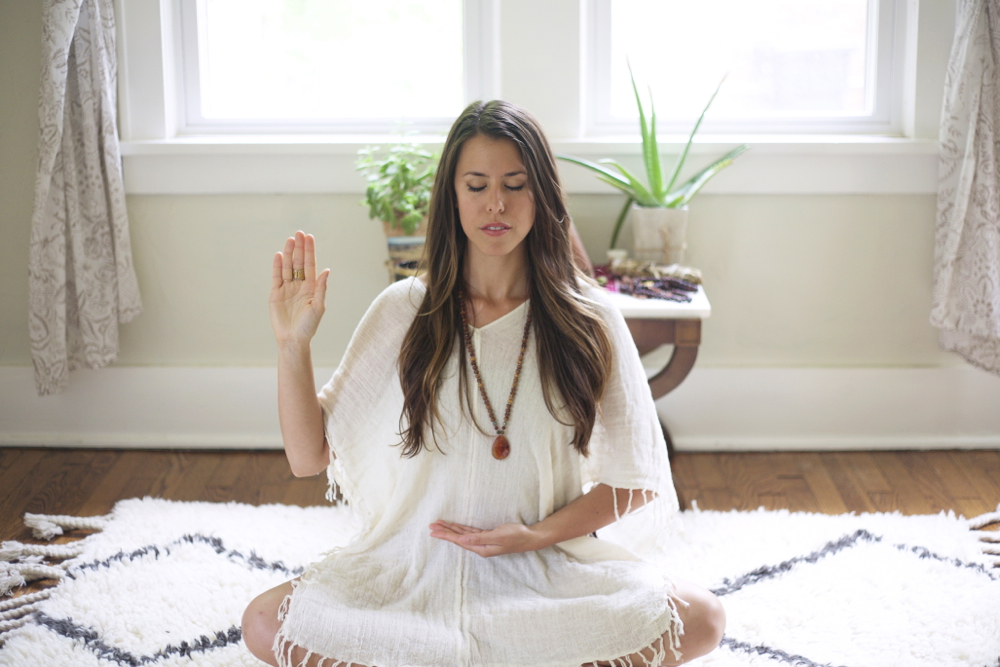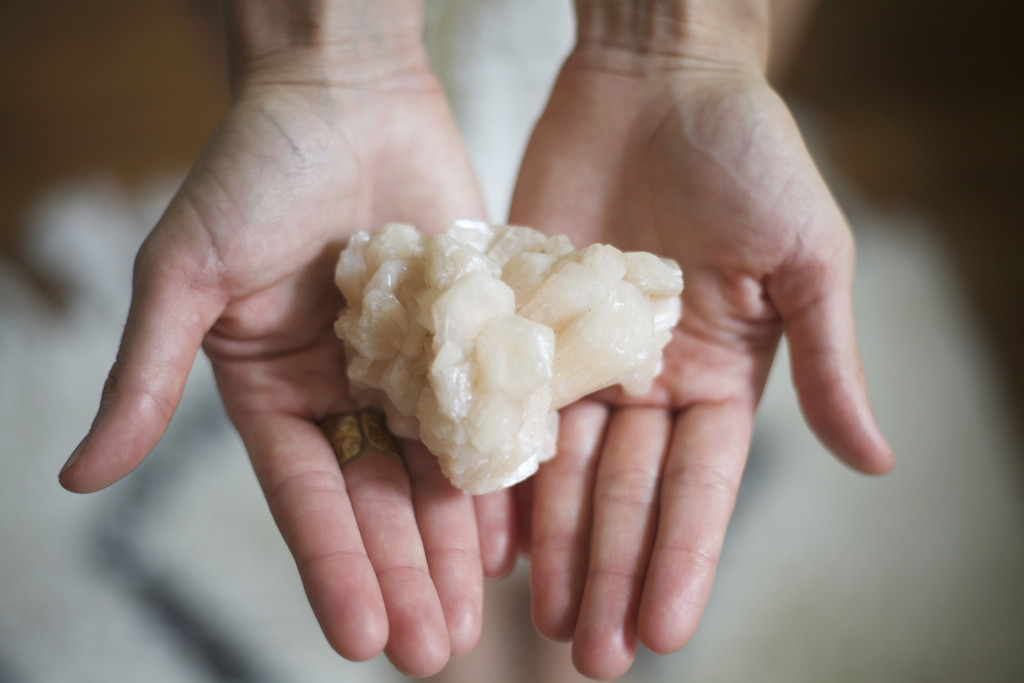Yoga: Abhaya Varada Mudra


This month’s mudra focuses on supporting digestion by grounding the elements of air and space – vata dosha – in the body and mind. Vata dosha governs the energy of movement, including our thoughts and the essential physiological functions of the body like respiration, digestion and elimination, and nervous system function. When in excess, a vata imbalance can show up in the form of anxious or fearful thoughts, gas and constipation, dry skin, joint problems, menstrual cramps and more. This mudra aims to bring support and stability if you’re feeling insecure, unstable and ungrounded when too much vata is present (ie. in times of change, travel, trauma, cold winter weather, emotional challenges). Because vata also governs our intestines, and your emotional state deeply influences your nervous system and ability to eliminate, this mudra positively influences healthy digestion by bringing nourishment back to these regions of the body and a peacefulness to your mind. By directing breath awareness into the pelvis and deeper abdominal breathing, you also signal the body to relax into the parasympathetic nervous system, a function of our body that supports proper elimination and rejuvenation of the organs. And as fear and insecurity are reduced with this mudra, it becomes easier to relax into a gentler physical and emotional state that promotes sustained vitality.
PRACTICE
1. Find a comfortable seated position where the spine can sit straight and the hips can relax. Use a chair or sit on a cushion to support this alignment with ease.
2. Hold the left hand slightly cupped below the navel, gently touching the body with the palm facing upward.
3. Hold the right hand slightly cupped at the level of the shoulder, with the palm facing forward. The elbow will rest close to the waist and the forearm perpendicular to the floor.
4. Allow your eyes to close and your face to relax. Take a deep breath and relax both shoulders to release any tension in the body. As you hold the mudra, take several more deep breaths to slow the mind down.
5. Begin to send each breath into the belly, softening the area around the navel and below the diaphragm, the seat of the solar plexus chakra. Let the breath continue to flow downward from the navel into the pelvis, to the root and sacral chakras.
6. Slow and deep inhalation, long and steady exhalation. Slow the exhalation down so it becomes twice as long as the inhalation. Feeling as breath out becomes longer, a sense of grounding begins to take root. There’s an awareness of the earth below you and your connection to her. Feel as if you yourself are growing roots downwards into the grounds, anchoring any fears and insecurities and inviting in stability, confidence and ease with each nourishing breath in.
7. As you feel more relaxed and grounded, repeat the affirmation, “With a greater sense of grounding, I move forward in life fearlessly.”
8. As you are ready, slowly release the mudra, allowing your hands to rest gently on the knees with the palms facing down. Take a moment to feel the confidence cultivated and thank yourself for taking time to honor your vitality.
——–
Note: This modified mudra practice is from Joseph & Lillian LePage’s book “Mudras for Healing & Transformation”, I highly encourage all to order a copy to explore this beautiful practice in more depth.
 [wpmenucart]
[wpmenucart]



